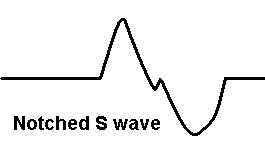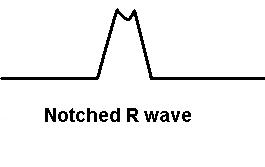A Ventricular Tachycardia (VT) is one that originates in the ventricles. The same irritable ventricular foci discussed in tutorial 5 may fire repeatedly with a rapid rate causing rapid contraction of the ventricles. Since the tachycardia originates in the ventricles and does not use the conduction system,
1. The QRS in VT is very wide.
We recall here a lesson from tutorial 5 in a slightly different form:
2. A wide QRS tachycardia is either VT or SVT with aberrant conduction.
How can we tell the difference? Well, for starters, it's safer to treat as a VT if you're unsure. 80% of wide QRS tachycardias are caused by VT and the consequences of VT are usually more severe. To be more certain, examine the precordial leads using the Brugada criteria below. They are to be used in the order given, i.e. if the first condition fails to give a diagnosis, then move to the second and so on. They are reported (by Brugada et. al.) to have a sensitivity of 98.7% and a specificity of 96.5%.
- Concordance - if there is no biphasic RS wave in any precordial lead, then it's VT. This means that all the precordial leads have monomorphic QRS complexes - they are concordant.
- RS>100msec - if an RS segment (measured from the beginning of the R to the minimum of the S as shown above) is wide enough, it's VT.
- AV dissociation - if the P-waves are uncorrelated to the QRS complexes, it's VT.
- Morphology - if V1,2 and V6 both satisfy the morphological criteria below it's VT. Otherwise it's SVT with aberrant conduction.
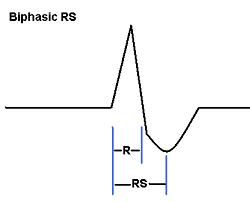
Morphology criteria
1. If there is a mostly positive QRS in V1 and V2 - (In later tutorials we will see that this is a Right Bundle Branch Block (RBBB) like pattern)
- V1 - a monophasic R or biphasic QR or RS wave. Here an RSR' pattern is not allowed - that is, there cannot be a second positive wave in the QRS after the S wave.
- V6 - R< S or a monophasic R or biphasic QR or a QS. Again no RSR' pattern is allowed here.
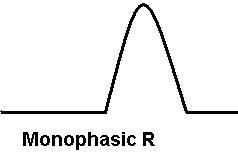

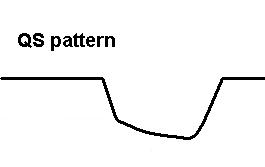
2. If there is a mostly negative QRS in V1 and V2 - (In later tutorials we will see that this is a Left Bundle Branch Block (LBBB) like pattern)
- V1 or V2 - R>30msec or RS>60msec or a notched S-wave.
- V6 - biphasic QR or a QS. Here we do not allow a notched monophasic R wave.
